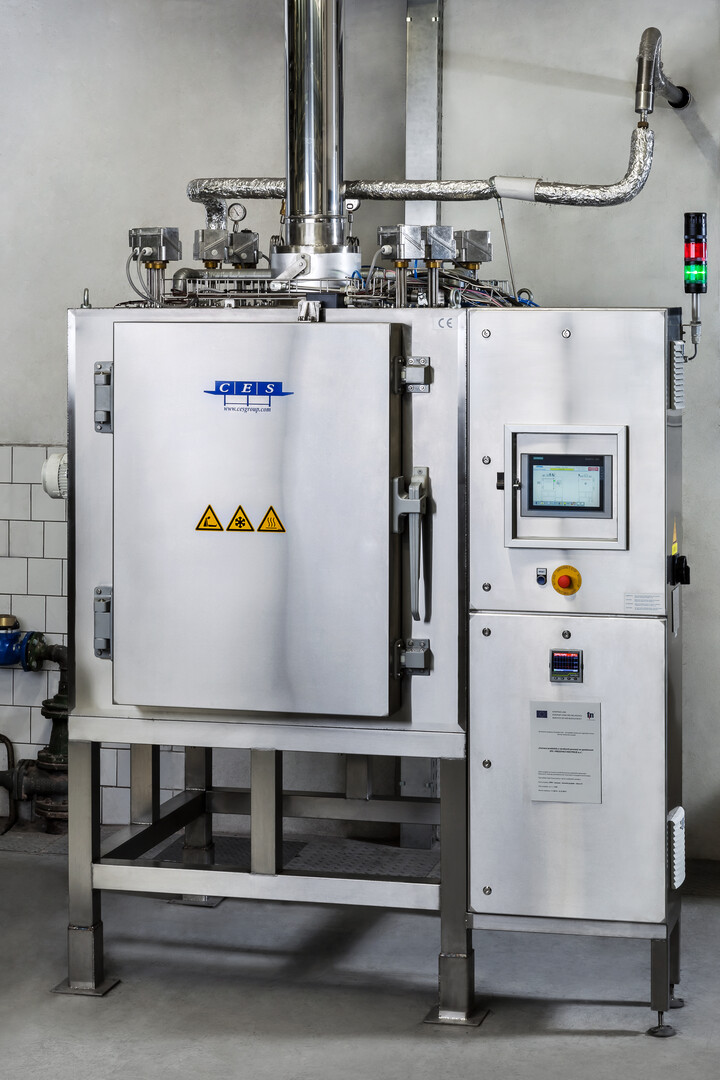Cryogenic processing
 Cryogenic box CES
Cryogenic box CES
Working space 600x900x600, load weight up to 600 kg. Working temperature -160° C to 200° C. Temperature gradient max. 5°C per minute.
With the recent modernisation of our hardening plant, a cryogenic freezer box was purchased to enable deep freezing of material to temperatures up to -160°C. This equipment is equipped with a state-of-the-art logging unit that allows for consistent monitoring of the process throughout, using a system of thermocouples that monitor both the temperature of the freezing medium (nitrogen) inside the chamber and the temperature directly in the material being processed. Our cryogenic unit allows the setting of various parameters to achieve the desired structure. These parameters are processing speed (temperature gradient, cooling rate) and residence time at the set temperature. With these three variables we are able to achieve a fairly wide range of resulting structures and material properties.
By deep freezing the processed materials, the completion of the austenite transformation initiated during quenching of the material can be achieved. During these processes, dimensional changes also occur, which is the first reason for the processing carried out; the fact of subsequent dimensional changes occurring after conventional processing (hardening and tempering) has been documented. These properties are used in the processing of moulds intended for the moulding of precision mouldings such as car body sheets, etc... The dimensional stability of the moulds can ensure compatibility for pressing equipment even after many years.
The freezing of steel materials made for hot work is proven by years of experience of the world's leading forges. During freezing, the dendritic structure is significantly disrupted, which causes the exclusion of different carbide types (primary, secondary) during subsequent tempering. These carbide parts are important for properties such as abrasion resistance and tool performance. The picture shows an example of a die where wear is indicated which can be reduced or delayed by this treatment, even by several forging cycles. Metallography of the structures of the processed steels can identify a large number of the desired carbide precipitates, which are the targeted structural feature.